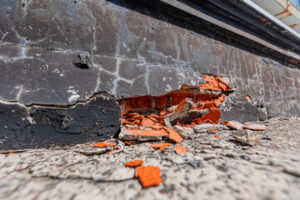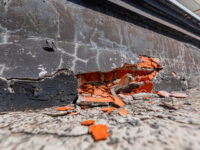The Importance of Foundation Repair
A home foundation is crucial to the structural integrity of a property, and repairs are necessary when problems arise. It is essential to address these issues early, as they tend to snowball if left unattended.
Foundation Repair Sugar Land costs vary depending on the type of foundation and soil conditions. Concrete piles (which resemble simple cylinders) can be lower-cost options if the soil conditions are suitable, while poured concrete piers may be required in other cases.
When it comes to the integrity of your home, there is nothing more important than its foundation. Regular inspections and timely intervention can safeguard your most significant investment, ensure the safety of your family, and preserve your home’s value. However, recognizing the signs of foundation damage isn’t always easy. If you spot problems early, it’s easier to take action and save money in the long run.
Cracks in walls and floors are a classic sign of a faulty foundation, especially if the cracks continue to widen. This often happens in places where there is moisture buildup, such as basements and crawl spaces. Moisture that is left untreated can lead to rotting beams and serious structural issues.
While hairline cracks on exterior brick aren’t usually cause for concern, gaps should be of greater concern. If the gap is wider than a quarter inch, it may be time to call in a professional. Gaps that appear around doors and windows are particularly problematic, as they can create spaces for bugs and moisture to enter the home. Additionally, if the door or window frame is pulling away from the brick wall, this is a warning sign that the foundation is shifting.
Another common indicator of foundation problems is sagging floors and ceilings. As your foundation sinks, shifts, or deteriorates, it can pull the floorboards down and warp them. This can leave rooms with uneven surfaces and can make them harder to keep clean.
It is also worth noting if your home’s stairs are becoming uneven or tilted. This can be caused by many things, including a change in soil moisture levels or improper installation of the staircase. However, this can be a very dangerous issue that should be dealt with as soon as possible.
In addition to these obvious signs of a foundation problem, you should be on the lookout for any unusual moisture in your home’s crawl space or basement. Moisture in these areas can lead to mold growth and musty smells. It can also encourage rot and attract termites, so it’s important to address any moisture problems immediately.
Repairing Cracks
A foundation that is cracking can be a huge concern for homeowners. This is because the foundation supports the entire building, so any damage can lead to serious structural issues for the property. Fortunately, there are ways to repair a foundation and prevent further damage. The first step is to identify and address the underlying cause of the problem. Often, this is soil settlement, water infiltration, or a combination of factors. Depending on the cause, different repairs are required.
When it comes to repairing cracks, there are two important distinctions: whether they threaten the structural integrity of the building and how much moisture is infiltrating them. Structural cracks are wide and can threaten the stability of a structure, while non-structural cracks are narrower and may not pose a threat to the foundation.
For minor cracks, a masonry patching compound can be used to fill them and repair the surface of the foundation. This process requires cleaning the cracks, removing any loose material, and making sure it is dry before applying the patch. If there are other signs of problems, such as sagging floors or doors that won’t open and close properly, it is best to consult a professional contractor before continuing.
Hydraulic cement is another option for repairing larger cracks in a foundation. This product expands as it dries, which helps fill in voids and seal the cracks. To use this solution, clean the cracks, remove any loose materials, and scrub them with a wire brush. This ensures better adhesion and helps prevent future problems.
For vertical cracks, a caulk gun can be used to inject epoxy or polyurethane into the cracks. These specialized resins help to reinforce the concrete and prevent water penetration. If you are worried about the durability of your foundation, a carbon fiber reinforcement can be added to the solution to help reduce movement in the cracks over time.
In cases of severe cracks, a professional foundation specialist can perform underpinnings to stabilize the foundation and prevent further damage. This can involve either rebuilding or adding pier stacks, which are steel-made, screw-shaped piers that distribute the weight of your home evenly over the foundation and prevent sinking. Alternatively, hollow steel pipes can be pushed into the ground under the foundation until they reach bedrock to stabilize and support the foundation.
Preventing Water Damage
Water damage can occur in the foundation of a home in several ways. One way is when the concrete becomes damaged due to weather or other factors that weaken the concrete. Another way is when a leak occurs in the plumbing system. If left unchecked, these leaks can cause significant damage to the property and may lead to mold or other hazardous materials. Keeping up with regular maintenance and inspections of the basement, crawl space, and exterior of the property can help prevent water damage to the foundation of a house.
Leaks can also affect the foundation of a home through porous building materials like drywall and ceilings. Plumbing leaks can spread quickly through these materials and reach the foundation if they are not properly sealed or repaired.
The leaking water can also harm the foundation by causing it to shift and crack. This shifting can affect the interior of a home by causing sticking doors and windows or buckling floors. Keeping up with regular maintenance and inspections can prevent these problems from arising and save homeowners money in repairs.
Soil evaporation and poor drainage are common causes of foundation damage. As the soil shrinks, it no longer provides support for the foundation of a home and the foundation begins to shift and crack. The best way to prevent this is by maintaining proper drainage around the house. This can be done by repairing any broken gutters and making sure the landscape slopes away from the house.
Another way to prevent soil evaporation and improper drainage is by installing or maintaining a sump pump. This pump can collect the water from rain or groundwater seepage and safely pump it into sewage lines, storm drains, or dry wells.
Another way to prevent soil evaporation is by watering the soil periodically. This will ensure that the soil stays moist and reduce the chance of it shrinking. The helix pier is another permanent foundation repair method that is made of galvanized steel and twists into the ground like an auger or screw. It penetrates into the soil until it reaches heavy, compacted dirt. Helical piers are a good option for most homes because they can penetrate through the surface soil and into the bedrock, which is ideal for supporting a heavy structure like a home or other commercial buildings.
Choosing a Contractor
Choosing the right foundation repair contractor is one of the most important decisions you will make. It is important to find someone who has a reputation for quality work and good customer service. You can ask friends and neighbors for recommendations or read online reviews. Look for a company that specializes in foundation repairs and offers a warranty. You should also find out whether the company has been evaluated by a professional organization to ensure that their repair methods meet building code standards.
A good foundation repair specialist should conduct a thorough onsite inspection before giving an estimate. They will take pictures and measure the effected area. They will also talk to you about what is happening with your home. They will then use this information to come up with a plan to fix the problem. It is a good idea to hire a company that focuses on foundation repairs only rather than other types of home improvement projects as they will have the specific skills and equipment needed for this type of work. It is much like hiring a carpenter or plumber that only works on houses.
Once the initial repairs are complete it is a good idea to do some preventative maintenance. This can include making sure that your gutter and drainage systems are working properly to drain water away from the house, marking any major cracks in your foundation with paint and monitoring them every few months. You should also contact your foundation repair contractor if you see any signs of new damage.
A good foundation repair contractor will explain what the repairs will cost and give you a timeline. The final bill will depend on a number of factors including the extent of the repairs and any additional costs that may be incurred. It is also a good idea to talk to your foundation repair specialist about financing options. This can help you avoid dipping into your savings or using credit cards. You can also find out about companies that offer a home equity loan. These loans can be a better choice than taking out a personal loan because you will be borrowing against the equity in your home and you will pay less interest.




